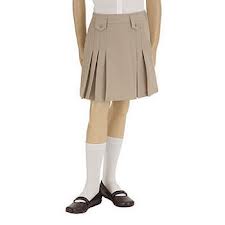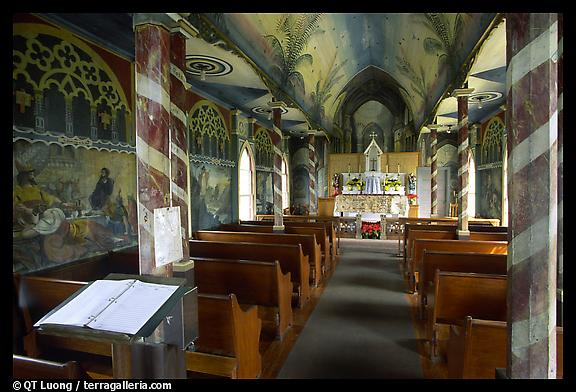|
|
|
Plain Style compare / contrast "Baroque Aesthetic" |
Plainness, or lack of ornament or pretension, has been a prevailing style of speech, dress, and architecture in North America's dominant White Protestant culture.
![]() Modern Americans rarely refer to this style directly but sometimes derisively as
"vanilla" or "white-bread"
Modern Americans rarely refer to this style directly but sometimes derisively as
"vanilla" or "white-bread"
![]() USA's "default"
culture of bland uneventfulness mixed with anxiety over threats and change
USA's "default"
culture of bland uneventfulness mixed with anxiety over threats and change
![]() Social emptiness of suburban life (largely created through
white flight from
multicultural cities)
Social emptiness of suburban life (largely created through
white flight from
multicultural cities)
Partly because of its plainness,
One of the main evidences of this culture's "plain style" is Anglo-Germanic cooking, often characterized as "bland," "meat and potatoes," with no seasoning hotter than black pepper. (Anglo-Germanic food comports with the Protestant Work Ethic, providing protein and calories while not enticing one to linger over meals before returning to work.)
The plain style is a powerful relic of North America's early colonial and immigrant past that has been both reinforced and challenged by literary, cultural, and religious trends since.
Plain Style in American Fashion
Puritan plain style
(signifies modesty, sobriety, industry,
middle-class or absence of class markers)
 |
 |
Modern American plain style a.k.a. prep, Gap, business or business casual
Abercrombie & Fitch, American Eagle
 |
 |
 |
Google images for "plain style"
![]()
OED plain, adj. 2.a. Of an area of land, water, etc.: open, clear, unobstructed . . .
II. Not embellished, adorned, or elaborate; without additions
4.a. Unembellished, without addition or decoration; not ornate, simple; not coloured . . .
6. Of a food, drink, etc.: not rich or highly seasoned; having few or basic ingredients; not elaborate, simple to prepare. plain bread and butter: bread and butter without the addition of preserves, etc. plain water: mere water, without any addition.
III. Evident, obvious, straightforward
7. Clear to the senses or the mind; evident, manifest, obvious; easily perceivable or recognizable.
8. Unmistakable; sheer, pure, absolute, utter, downright.
9.a. Of which the meaning is evident; simple, easily intelligible, readily understood, as in "plain English" or "plain language."
10.a. Straightforward, simple, basic; not intricate or complicated.
12. Of something spoken or expressed: free from ambiguity, evasion, or subterfuge; straightforward, direct, blunt. Freq. in plain truth.
![]()
Historical sources of the Plain Style:
Probably the most important single formal background is Protestant Christianity, which often contrasts itself with Catholicism by de-emphasizing ceremony, tradition, and decor.
-
With some exceptions, architecture of Protestant Christianity is unadorned compared to Catholic buildings and interiors—e.g., few Protestant churches have statues.
-
Extravagant or colored styles of clothing (for clergy and lay people alike) may give place to sober black-and-white styles.
-
Protestant ministers may reject fancy or over-educated speech in favor of plain language (though various Catholics may well do the same).
These descriptions are not intended to criticize Catholic appearances or styles, which may well be described in better terms, but only to represent implied Protestant perceptions of Catholic styles. Besides, religious practice always offers local exceptions. The examples below are extreme in order to illustrate the dialectic.
Interiors of two Baptist (Protestant) Churches
|
|
|
Interiors of two Catholic Churches
|
|
|
Another widespread factor in early North America is the simple life required by frontier existence, whose conditions precluded extravagance and encouraged a rough equality of rich and poor.
![]()
Two more specific historical sources for Protestant plain style:
![]() the
Puritans,
especially through their identification with the ancient Jews, whom
Yahweh told, “You
shall not make for yourself a carved image—any likeness of anything that
is in heaven above, or that is in the earth beneath, or that is
in the water under the earth" (Exodus 20.4); or
Numbers 33.52:
"you shall drive out all
the inhabitants of the land from before you, destroy all their
engraved stones, destroy all their molded images, and demolish
all their high places."
the
Puritans,
especially through their identification with the ancient Jews, whom
Yahweh told, “You
shall not make for yourself a carved image—any likeness of anything that
is in heaven above, or that is in the earth beneath, or that is
in the water under the earth" (Exodus 20.4); or
Numbers 33.52:
"you shall drive out all
the inhabitants of the land from before you, destroy all their
engraved stones, destroy all their molded images, and demolish
all their high places."
![]() the Founding of the USA in the
Enlightenment (1700s): see
Neo-Classical / Greek Revival
Architecture
the Founding of the USA in the
Enlightenment (1700s): see
Neo-Classical / Greek Revival
Architecture
![]()
In literature, the "plain style" is evoked by the Pilgrims' Governor John Bradford in his introduction to his journal, Of Plymouth Plantation:
"And first of the occasion and inducements thereunto [the Pilgrims' coming to America]; the which, that I may truly unfold, I must begin at the very root and rise of the same. The which I shall endeavor to manifest in a plain style, with singular regard unto the simple truth in all things; at least as near as my slender judgment can attain the same."
The "plain style" may be essential to modern democracy, and many American writers have similarly dedicated themselves to writing plainly so that common people can understand and benefit from their words. The difficulty later readers find in reading the Puritans and their descendants derives mostly from their distance in time. In fact, the Puritans write more soberly and plainly--with limited metaphor or adornment--compared to contemporary English writers like the explorer John Smith and the 17th-century poet John Donne, both of whom would find their theological homes in the Anglican church, which the Puritans criticized as being too close to Catholicism. Later writers in this more elaborate Southern / Anglican style would include Edgar Allan Poe and William Faulkner, whose prose styles sometimes deliberately distort the plain truth of what they represent.
Among American writers who cultivate a plain style:
William Bradford, Of Plymouth Plantation
Anne Bradstreet in her domestic poems
Benjamin Franklin
Walt Whitman
Mark Twain
Edith Wharton
Ernest Hemingway
Hart Crane
William Carlos Williams
American writers who cultivate a more ornate or European style:
James Fenimore Cooper
Edgar Allan Poe
Nathaniel Hawthorne
Henry James
William Faulkner
Thomas Pynchon





